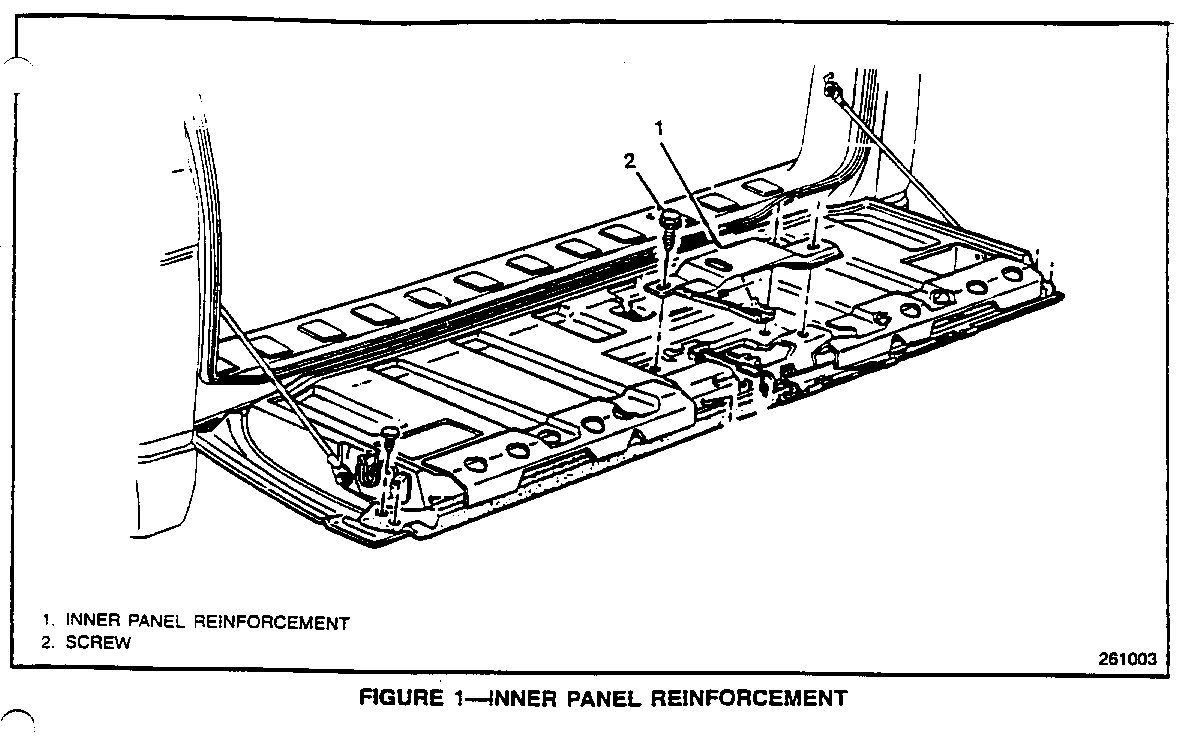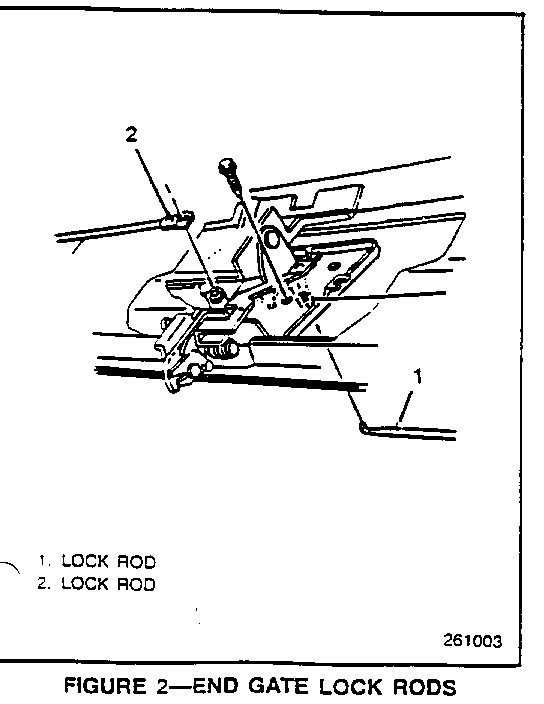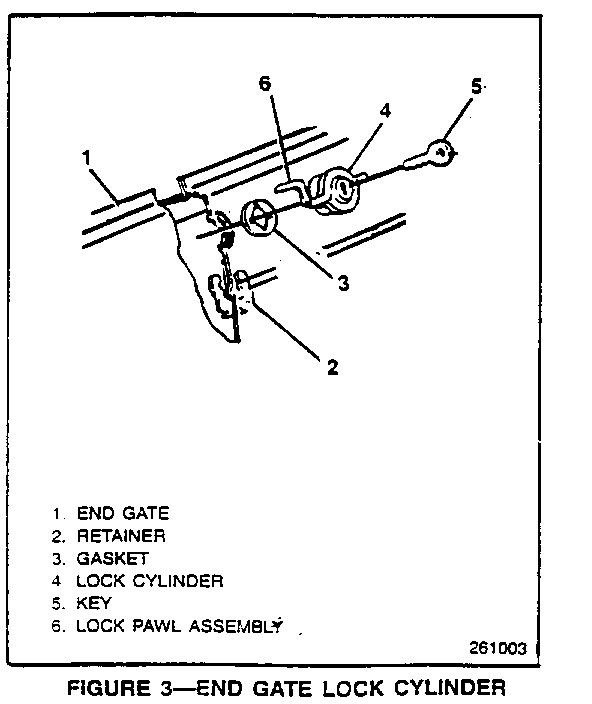ENDGATE LOCK CYL ASSY RATTLE BEND LOCK CYLINDER SPRING

SUBJECT: ENDGATE LOCK CYLINDER ASSEMBLY RATTLE (BEND THE LOCK CYLINDER SPRING)
VEHICLES AFFECTED: 1982-91 "S/T" UTILITY VEHICLES CHEVROLET BLAZER, GMC JIMMY, OLDSMOBILE BRAVADA
Some owners of 1982-1991 S/T utility vehicles may experience a rattling sound emanating from the rear of the truck. This condition may occur if the end gate lock cylinder assembly is loose.
To correct this condition, it is necessary to bend the ends of the spring within the lock cylinder assembly eliminating any clearance between the pawl assembly and cylinder housing.
SERVICE PROCEDURE:
1. Open the end gate to the horizontal position and remove the inner trim panel.
2. Remove the end gate inner panel reinforcement from the end gate (Figure 1, Item 1).
3. Disconnect the end gate lock rods (Figure 2, Items 1 and 2).
4. Remove the lock cylinder retainer (Figure 3, Item 2).
5. Working through the access hole, remove the lock cylinder and gasket (Figure 3, Items 4 and 3) through the outer panel.
6. Remove the spring (located on the lock assembly) and carefully bend the spring ends just far enough to eliminate any clearance between the lock pawl assembly and the lock cylinder housing (Figure 3, Items 6 and 4).
Note: If the spring breaks while bending, it will be necessary to replace the lock cylinder assembly.
7. Reinstall the spring in the lock assembly. Next, shake the assembly to check for looseness. If loose, replace the lock cylinder assembly.
8. Reinstall the gasket, lock cylinder and retainer (Figure 3, Items 3, 4 and 2).
9. Reconnect the end gate lock rods (Figure 2, Items 1 and 2).
10. Reinstall the end gate inner panel reinforcement to the end gate (Figure 1, Item 1).
11. Reinstall the inner trim panel.
For vehicles repaired under warranty use:
Labour Operation: B-5810 Labour Time: 0.3 Hours



General Motors bulletins are intended for use by professional technicians, not a "do-it-yourselfer". They are written to inform those technicians of conditions that may occur on some vehicles, or to provide information that could assist in the proper service of a vehicle. Properly trained technicians have the equipment, tools, safety instructions and know-how to do a job properly and safely. If a condition is described, do not assume that the bulletin applies to your vehicle, or that your vehicle will have that condition. See a General Motors dealer servicing your brand of General Motors vehicle for information on whether your vehicle may benefit from the information.
